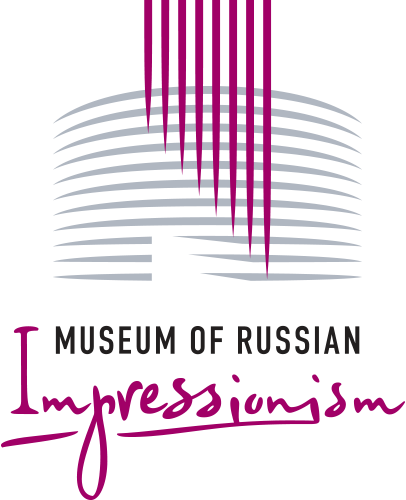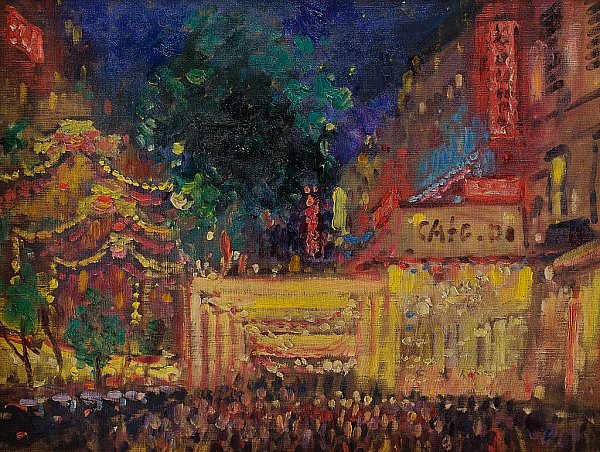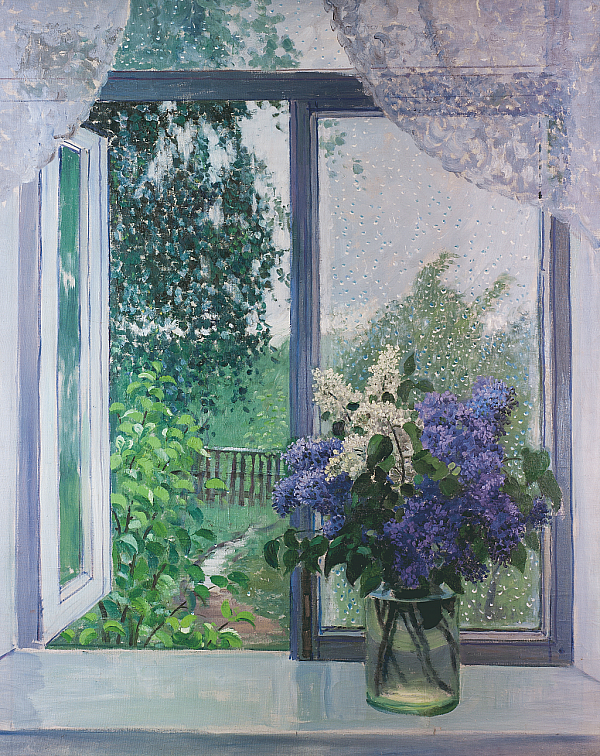Alexander Gerasimov
12.08.1881 - 23.07.1963
None of us know what the future has in store for us. That was certainly true for Alexander Gerasimov: as a young student of the renowned Konstantin Korovin, he could not have imagined that one day he would denounce his mentor and turn into a fierce opponent of impressionist art, proclaiming that “Soviet painting does not need to smell of ‘French perfume’!” Gerasimov studied art at the Moscow School of Painting, Sculpture and Architecture. Back then, he was quite drawn to French Impressionism and happily borrowed its free painterly style and use of broad brushstrokes from his teachers. Korovin spoke highly of his student and even suggested that Gerasimov take classes in architecture as well as painting, in order to extend his time at Korovin’s workshop. Gerasimov accepted his tutor’s advice. Gerasimov’s ancestors included both peasants and merchants. His father was a horse trader, though not a very successful one, and his mother, an adherent of a traditional upbringing, raised him accordingly: at the age of seven the boy began classes at the parish school, and three years later passed the entrance exams to the Kozlov District School. In 1903 Gerasimov was accepted by the Moscow School of Painting, Sculpture and Architecture. A diligent student and avid reader, he met a lot of fascinating people, including Vladimir Gilyarovsky, the famous writer and newspaper journalist who was to become a good friend. As soon as Gerasimov graduated, he was drafted into the army and served as a non-combatant soldier with a hospital train on the Southern Front: this was 1915, with the First World War at its peak. He was discharged after the Revolution of 1917 and went back to his native town of Kozlov, where he took a job at the local theater – like his mentor Korovin, he dedicated himself to stage design. After seven years in his hometown, Gerasimov was ready for Moscow, and he left Kozlov, never to return. The artist introduced new themes to his work: the valor of Soviet military commanders, portraits of Vladimir Lenin, Josef Stalin, and the biologist Ivan Michurin; in this way, Gerasimov became the leading figure at the Academy of Arts. Travel abroad, solo exhibitions, the title of People’s Artist of the Soviet Union and, finally, the post of the Academy’s President were among the milestones of his spectacular career. Gerasimov became a “radical proponent of realist art”, a steadfast adversary of those who practiced the so-called “free thinking” “aesthetic Formalism” which venerated the “decaying” art of the bourgeois West. With “the Thaw” - the changes that the Soviet Union experienced following Nikita Khruschev’s rise to power - Gerasimov’s life took a tragic turn. He lost his post as head of the Academy of Arts, as well as his exalted status in Soviet society. Everyone seemed to have abandoned the elderly Gerasimov, the only thing that was left for him being to lament: “Everyone loathes me. Nobody ever visits. And to think how much I have done for other artists! One day they will remember it all!”





